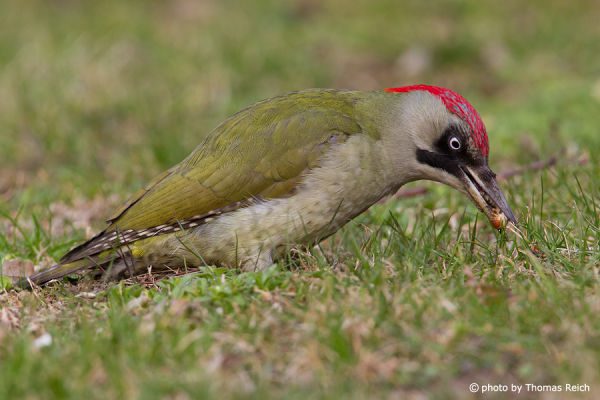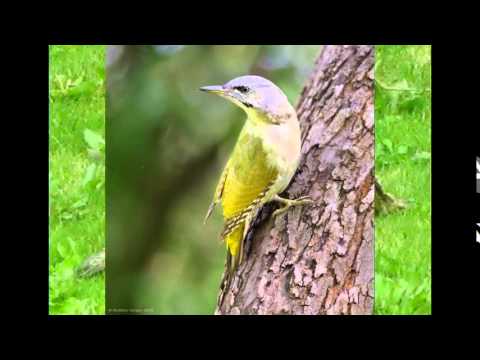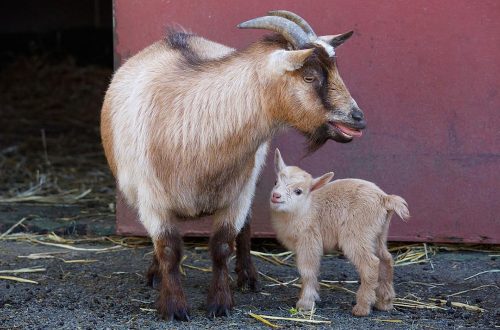
Green woodpecker: description of appearance, nutrition, reproduction and photo
In the mixed and deciduous forests of Europe, large birds with a beautiful outfit live – green woodpeckers. They are absent only in the areas occupied by the tundra and in the territory of Spain. In Russia, birds live in the Caucasus and west of the Volga region. In a number of subjects of the Russian Federation, the green woodpecker is listed in the Red Book.
Contents
Description of the appearance and voice of the green woodpecker
The upper body and wings of the bird are olive-green in color, the lower is light green or greenish-gray with dark streaks (pictured).
Under the beak of the woodpecker is a strip of feathers resembling a mustache. In females it is black, in males it is red with a black border. They have a narrow cap of bright red feathers on the back of their head and on the top of their heads. The black front of the bird’s head against the background of green cheeks and red top looks like a “black mask”. Green woodpeckers have a yellow-green uppertail and a lead-gray beak.
Males and females differ only in whisker coloration. In birds that have not reached puberty, the “whiskers” are undeveloped. Juveniles have dark gray eyes, while older ones are bluish-white.
Woodpeckers have four-toed feet and sharp curved claws. With their help, they cling tightly to the bark of a tree, while the tail serves as a support for the bird.
Vote
Compared to the gray woodpecker the green individual has a sharper voice and is characterized as “scream” or “laughter”. Birds make loud, glitch-glitch or glue-glue sounds. The stress is mostly on the second syllable.
Birds of both sexes call throughout the year, and their repertoire does not differ from each other. During singing, there is no change in the pitch of the voice. The green woodpecker almost never trills and rarely hammers trees.
Beautiful photos: Green woodpecker
Hunting and food
Green woodpeckers are very voracious birds. In large numbers, they eat ants, which are their favorite delicacy.
Unlike other species of woodpeckers, these individuals seek food for themselves not on trees, but on the ground. Having found an anthill, the bird, with its sticky ten-centimeter tongue, extracts ants and their pupae from it.
They mainly eat:
- ants of the genus Formica, Lasius and red forest ants;
- snails, hawk caterpillars, lumberjack larvae, earthworms;
- bees that are caught near hives suspended in the forest;
- vegetable feed, which they eat to a lesser extent, choosing fallen fruits of mulberry, grape, sweet cherry, cherry, persimmon, pear, apple tree. They can peck berries and seeds.
In the cold season, when snow falls and ants hide underground, in search of food, green woodpeckers break through holes in snowdrifts. They are looking for sleeping insects in different secluded corners. In addition, in winter, birds willingly peck frozen berries yew and rowan.
Reproduction
By the end of the first year of life, green woodpeckers begin to breed. The male and female spend the winter separately from each other. And in February, they begin marital excitement, which reaches its peak in early April.
Both sexes look very excited in spring. They fly from branch to branch and advertise the place chosen for the nest with loud and frequent calls. Unlike other woodpeckers, drumming is rare.
At the beginning of the mating season, birds sing in the morning, and towards the end – in the evenings. Even after the sound contact of the female and male, their activity does not stop. First birds call to each other, then converge closer and touch with their beaks. These caresses culminate in mating. Before copulation, the male ritually feeds the female.
Pairs are formed only for one season. However, due to the attachment of birds to a particular nest, these same individuals may reunite next year. In this they differ from grey-haired woodpeckers, who lead a nomadic lifestyle outside the breeding season and often change nesting sites. Green woodpeckers do not leave their territory and do not fly away from the places of overnight stay for more than five kilometers.
Arrangement of nests
Birds prefer the old hollow, which can be used for up to ten or more years in a row. Most often, green woodpeckers build a new nest at a distance of no more than five hundred meters from last year.
Both birds hammer hollow, but most of the time, of course, the male.
The hollow can be located on the side bough or in the trunk, at a height of two to ten meters from the ground. A bird tree is chosen with a rotten middle or dead. Most often, softwoods are used to build a nest, such as:
- willow;
- Birch;
- beech;
- poplar.
The diameter of the nest is from fifteen to eighteen centimeters, and the depth can reach fifty centimeters. The hollow is usually about seven centimeters in diameter. The role of the litter is performed by a thick layer of wood dust. It takes two to four weeks to build a new nest.


Watch this video on YouTube
Green woodpecker chicks
Bird eggs are laid from late March to June. The number of eggs in one clutch can be from five to eight. They have an oblong shape and a shiny shell.
The bird sits on the nest after laying the last egg. Incubation lasts fourteen to seventeen days. In pairs both individuals sit on the nestchanging each other every two hours. At night, most often only the male is present in the nest.
The chicks are born almost simultaneously. Both parents take care of them. Green woodpeckers feed the chicks from beak to beak, regurgitating the brought food. Before the chicks leave the nest, adults behave secretly, without giving out their presence in any way.
On the twenty-third – twenty-seventh day of life, chicks are starting to attract attention and periodically try to get out of the nest. At first they just crawl on a tree, and then they start flying, each time returning back. Having learned to fly well, some of the chicks follow the male, and some follow the female, and stay with their parents for about seven more weeks. After that, each of them begins an independent life.
It is easier for a green woodpecker man to hear than to see. Anyone who sees or hears this beautiful songbird will get an indelible impression and the voice of a green woodpecker will not be confused with anyone else.


Watch this video on YouTube







